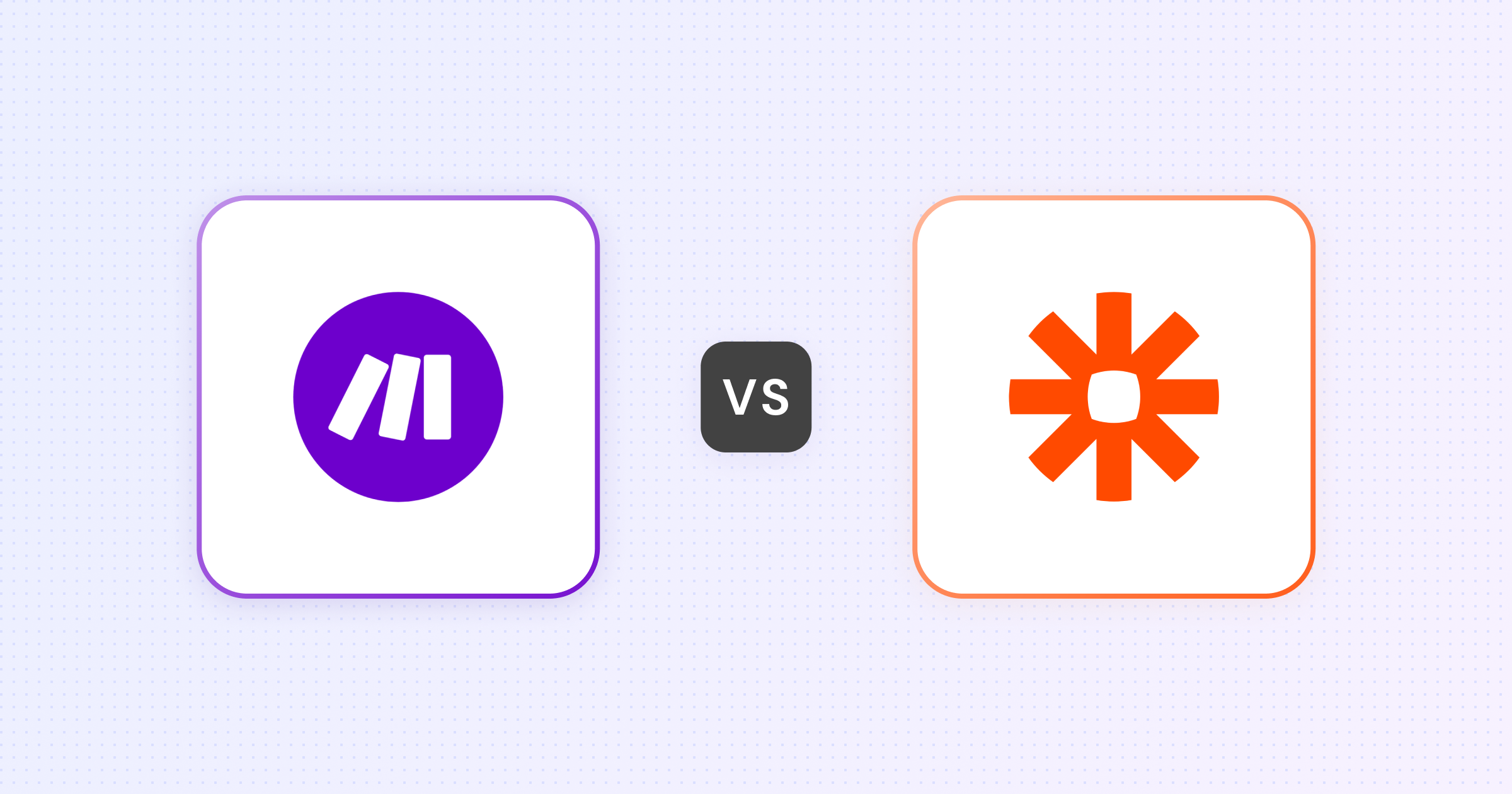
If you’re looking for a workflow automation tool to integrate your favorite apps and automate repetitive tasks, two names often come up: Make (formerly Integromat) and Zapier. Both platforms have powerful features to streamline complex workflows. But how do they compare, and which tool is best for your specific needs?
In this article, we’ll dive deep into Make vs. Zapier, examining their interfaces, pricing structures, and key features to help you make the best decision for your business. As a bonus, we’ll also review an emerging contender in the market that’s redefining what's possible in this category. (Hint: it’s us, Relay.app!)
But before we get into the specifics of each of these platforms, let’s quickly review what you should expect in a workflow automation tool.
What is a workflow automation tool?
The purpose of a workflow automation tool is to simplify how disparate applications interact and integrate. They typically come with a user-friendly interface, drag-and-drop editors, and can handle integration tasks ranging from simple data syncs like updating a CRM to complex, multi-step workflows across a variety of systems.
Unlike some other workflow automation tools, Zapier and Make are specifically geared towards non-developers, empowering people with little to no technical expertise to automate business processes. This is why these two tools are often in the same consideration set, but each platform brings a unique set of features to its automation approach.
Let’s take a high-level look at why you might want to go with one of these options.
Make vs Zapier: Which is best for you?
If you’re looking for a quick take, here's our tl;dr of how Make and Zapier compare:
- Make: Best for users requiring complex, multi-step workflows and those who prioritize cost-effectiveness and customization in their automation processes.
- Zapier: Best for individuals and teams seeking ease of use with a vast integration library, preferring a straightforward approach to automation without the need for in-depth technical knowledge.
Both tools make your life easier by connecting your favorite apps and services, but they each have their unique offerings. It's all about matching your needs to their strengths.
Choose Zapier If:
You're a beginner who wants to jump in without a manual. You care about:
- User Experience: You're into a more intuitive, visual interface. Zapier's got friendly 'Zaps' that guide you through setting up your automated tasks with clear step-by-step logic.
- Range of Integrations: You want access to a massive app directory. Zapier boasts a ton of integrations, so chances are, your apps are on the list.
- Simpler Workflows: You're not looking to get super granular. Zapier handles straight-line tasks like a champ - think 'If this, then that' scenarios.
- Premium Pricing: You don't mind paying a bit for convenience and are OK with the set number of Zaps and tasks that come with each tier.
Choose Make If:
You’re more tech-savvy and want granular control of your workflows. You care about:
- Advanced Features: You're ready to set up more complex automations. Make gives you tools like advanced Conditional Logic and Router tool, enabling you to build multi-step, intricate workflows.
- Detailed Control: You love the idea of granular control over your automations. With Make, you get to manage many more components of your workflow steps.
- Volume Pricing: You need a cost-effective solution that grows with you. Make's operations-based pricing model is generally kinder to your wallet as your automation needs expand.
- Technical Expertise: You have the know-how (or the drive to learn) to take advantage of Make’s detailed features and flexibility.
Why not consider Relay.app as an alternative?
When looking at automation platforms like Make and Zapier, another emerging tool on the market is Relay.app. Offering a unique blend of features, Relay.app is redefining the standards of workflow automation by emphasizing AI assistance, human oversight, and collaborative capabilities.
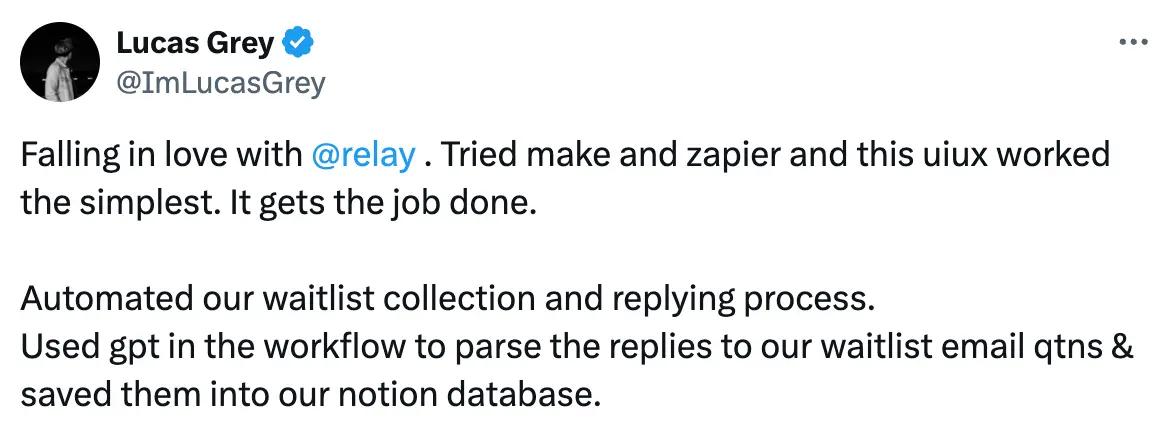
Why people love Relay.app:
- AI experience: Relay.app offers advanced AI integrations, including OpenAI’s GPTs, Claude, Gemini, and Llama, built directly into the platform with no need for external accounts or API keys—it's free and ready to use.
- Human-in-the-loop capabilities: The platform uniquely integrates human judgment into workflows, enabling approvals, decisions, and data input for businesses needing a balance between automation and human insight.
- Collaborative automation building: Teams can collaborate on automations easily by adding comments, making edits, and refining workflows, ensuring a seamless fit for teams with multiplayer needs.
- Simple and predictable pricing: Relay.app provides transparent and straightforward pricing compared to Zapier and Make, helping you better manage budgets and scale without unexpected costs.
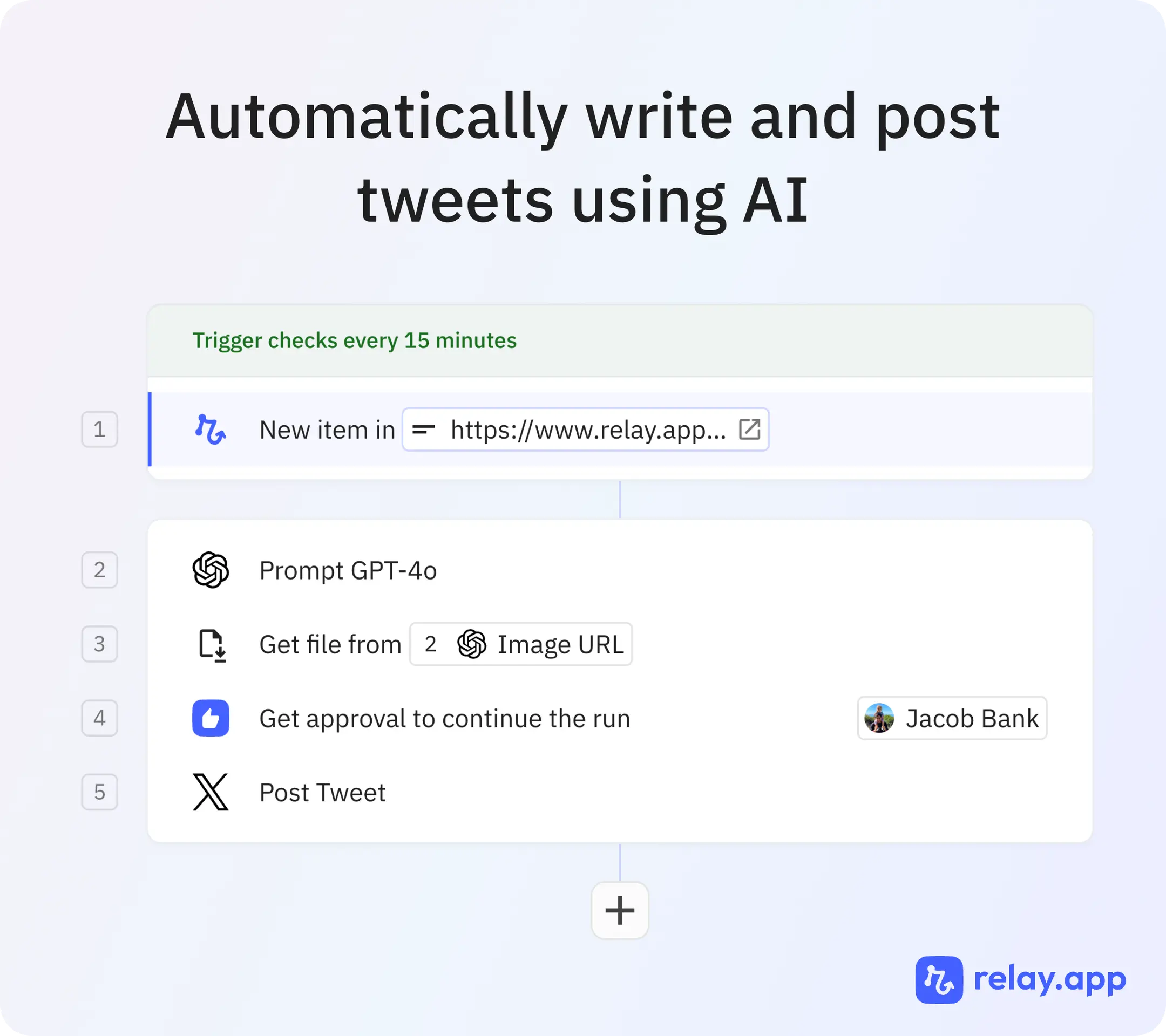
Still unsure of which way to go? Let’s take an in-depth view of the major differentiators of each of these tools to get a better understanding of their respective offerings.
Key features of Make
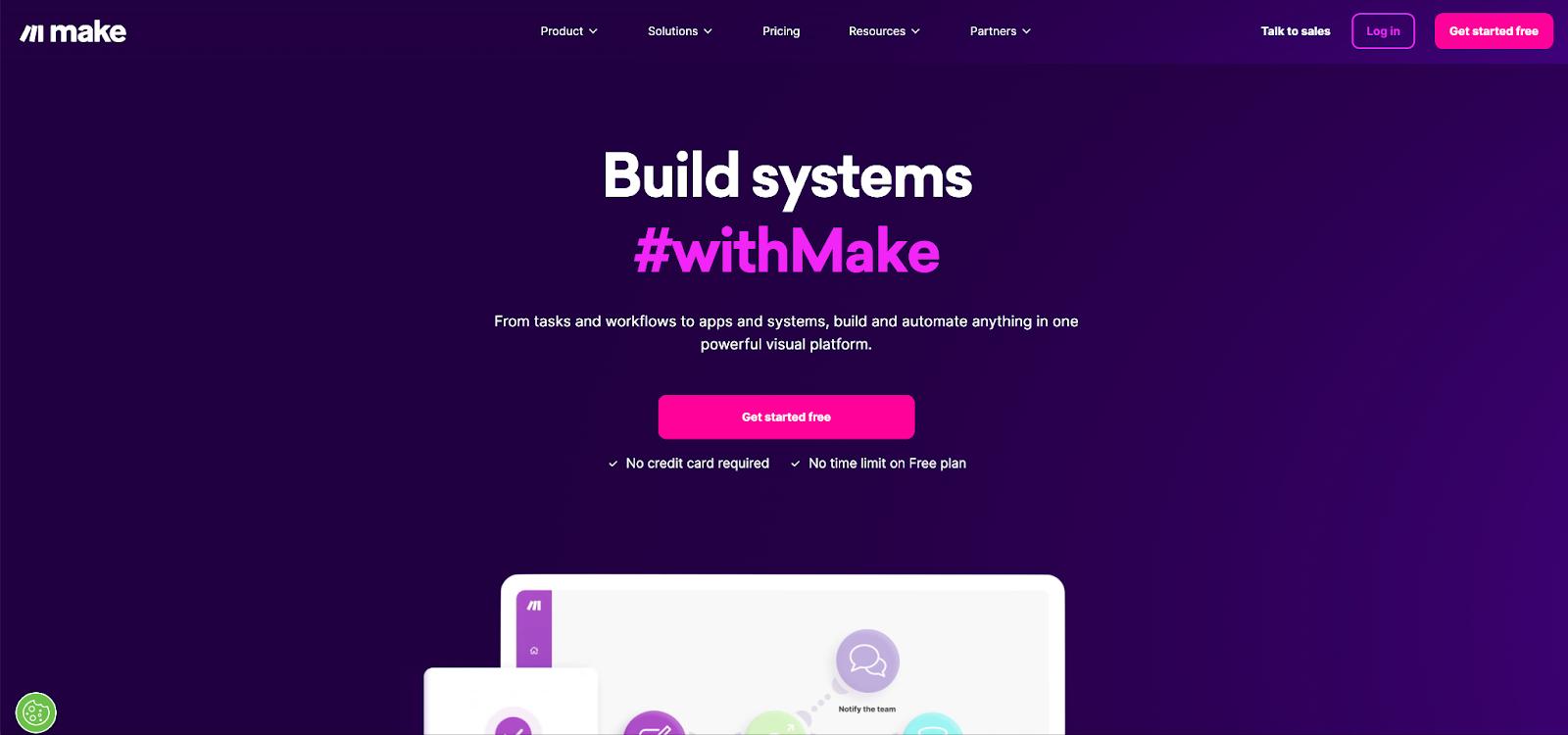
Make offers a comprehensive suite of features that cater to a wide array of automation needs. It excels in handling complex, multi-step workflows, offering unmatched granularity and flexibility. The tool suits users with specific automation visions, providing deep customization through its visual builder, enabling users to craft detailed scenarios, and ensuring routine tasks execute as planned.
Here's what the automation interface looks like in Make:

Now let’s take a closer look at some of the key features, tools, and capabilities that Make brings to the table.
Multi-step workflows
Juggling multiple tasks sequentially? No problem. Make supports complex, multi-step workflows that can handle intricate processes involving multiple actions and conditions. This capability allows you to design detailed automations that accurately reflect your nuanced operational needs, ensuring tasks are executed precisely as intended.
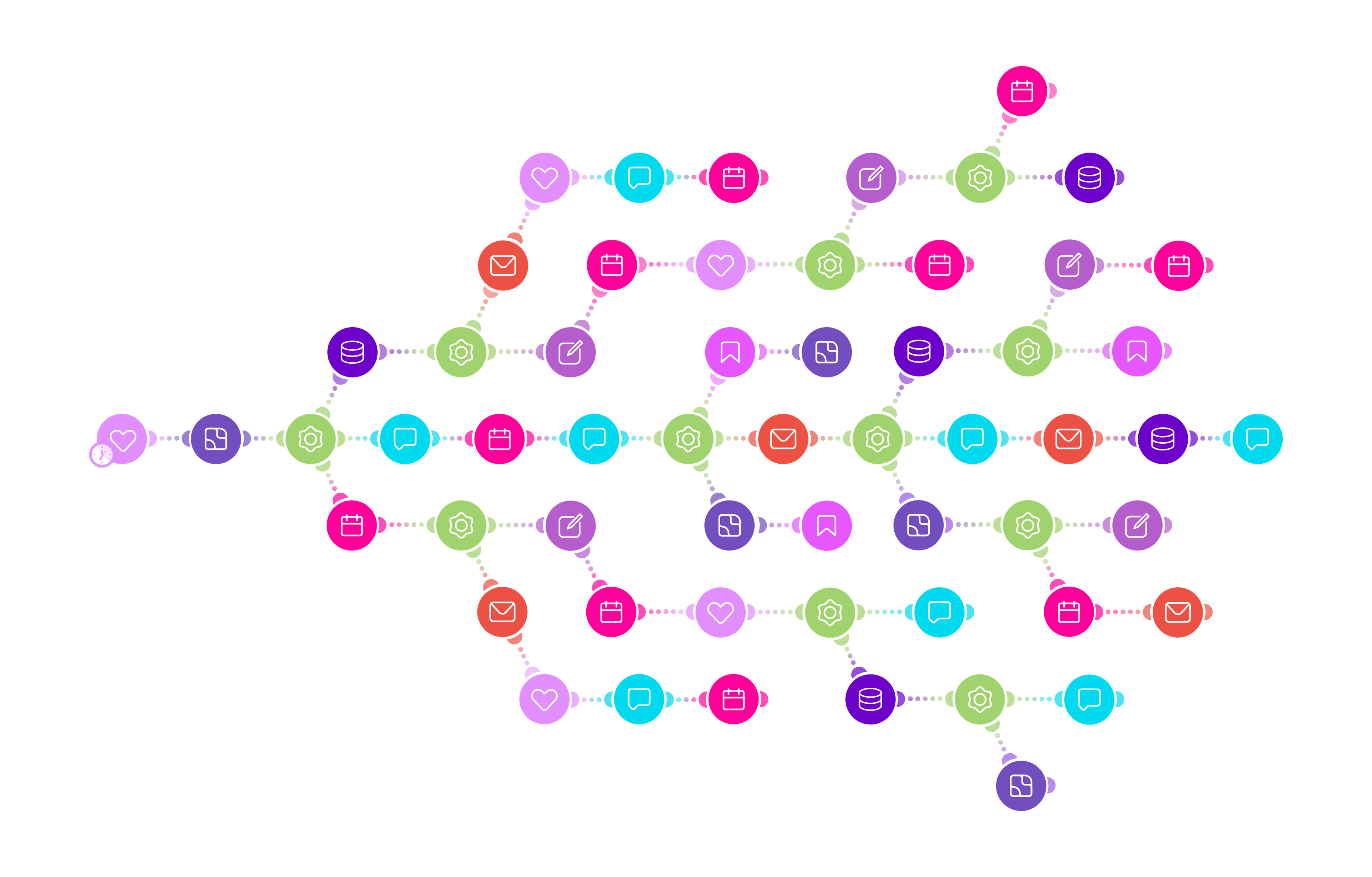
Instant webhook execution
Webhooks are a critical component in triggering automations based on events in other applications. Make's instant webhook execution means that as soon as an event occurs, the corresponding automation is triggered without delay, enhancing the responsiveness and timeliness of workflow execution.
Unlimited use of tools
Make does not restrict access to its powerful tools, such as filters, functions, routers (paths), and more, regardless of the plan you're on. This openness ensures you can fully utilize Make's capabilities to customize and refine their automations to meet your exact requirements.
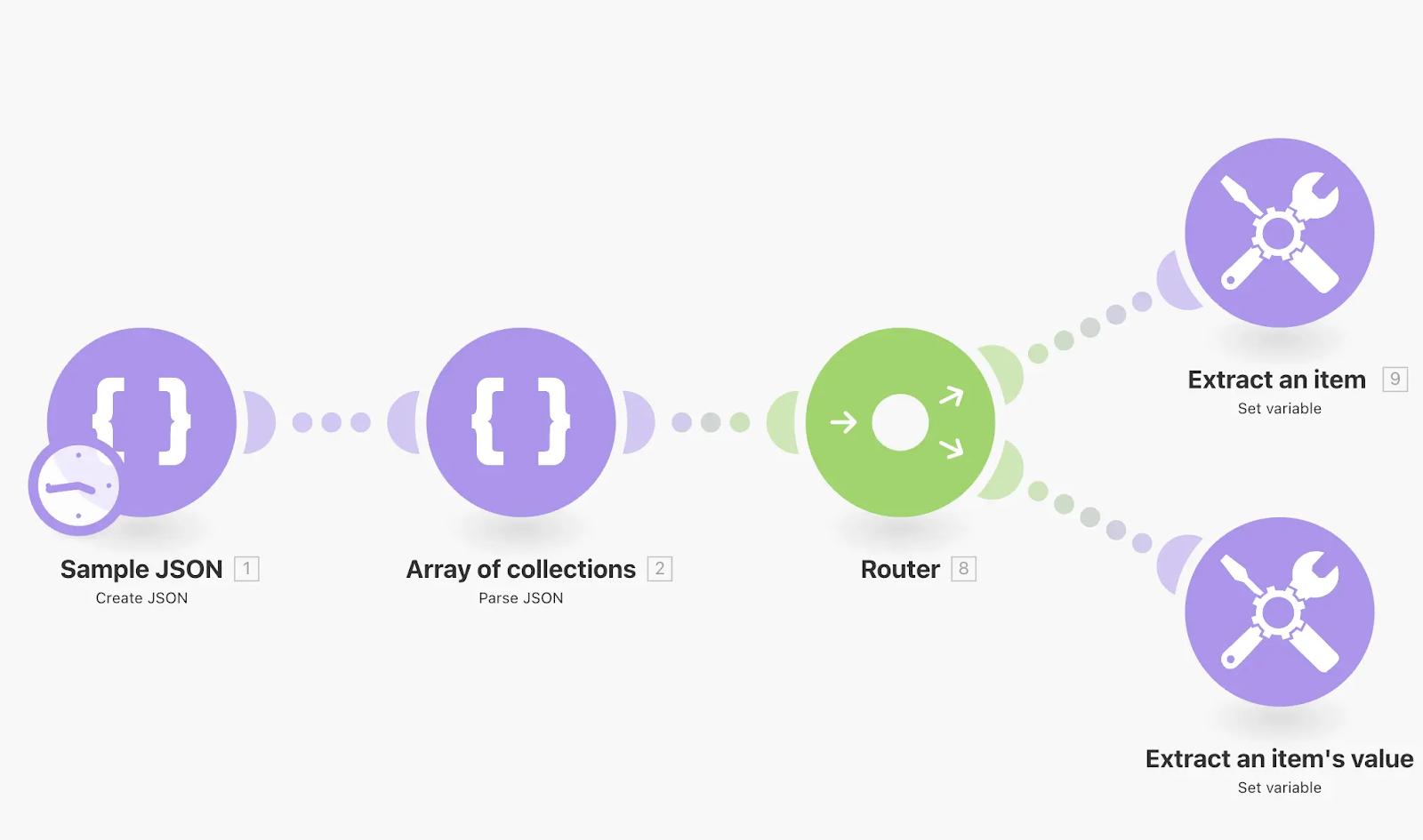
Complex data manipulation
Make excels in offering advanced data manipulation capabilities, including array manipulation, JSON/XML parsing, cycles, transactions, and more. These features empower you to work with data in sophisticated ways, enhancing the power and flexibility of automations.
Depth of integrations
Despite featuring a smaller app library (1,600+), Make provides significantly more API endpoints per app than Zapier. This distinction means that you have access to a wider variety of actions and triggers when setting up their automations, allowing for more granular and specific control over your workflows.
To pick just one example: Zapier offers 26 potential actions with Trello and Make offers 52.
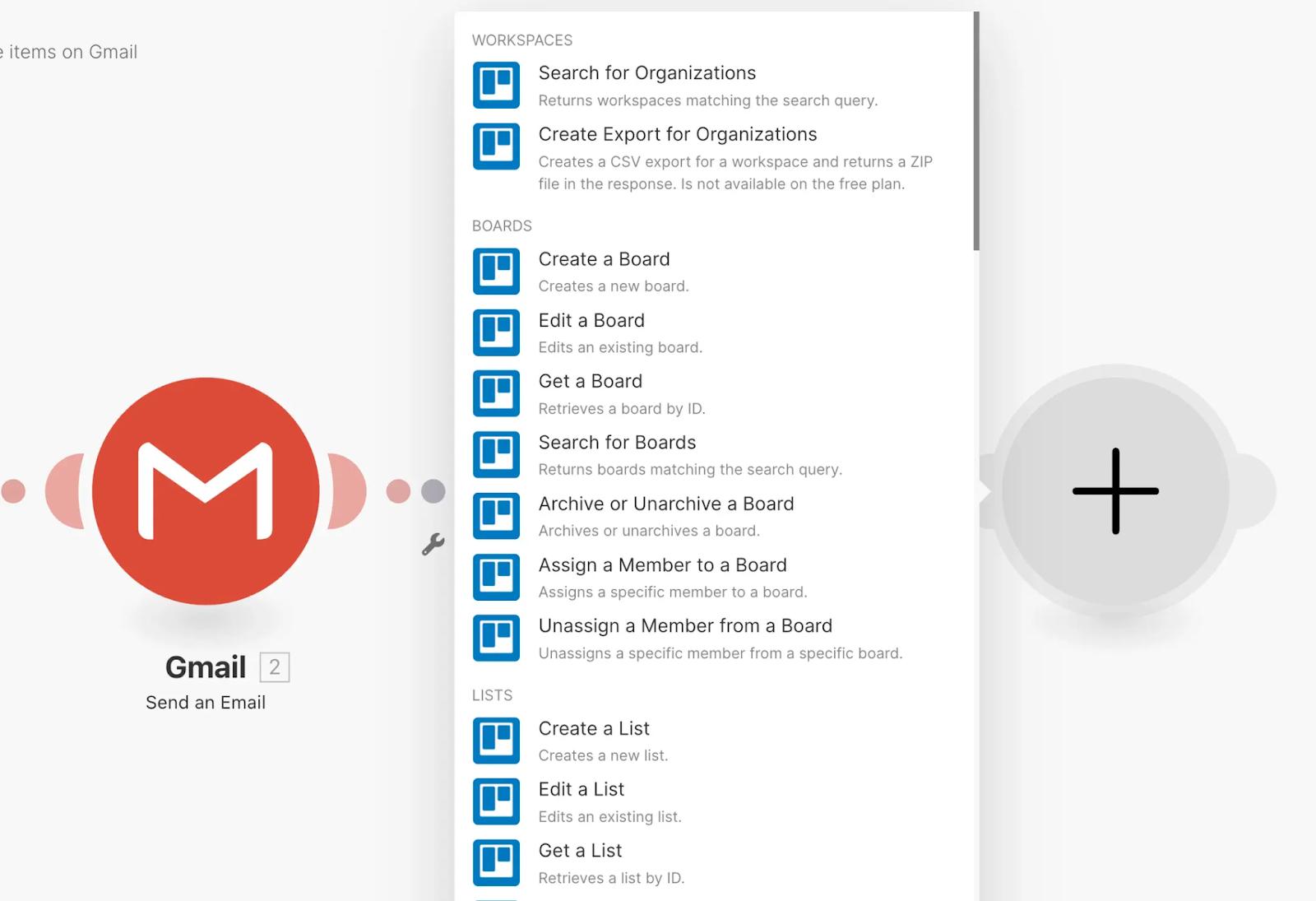
Key Features of Zapier
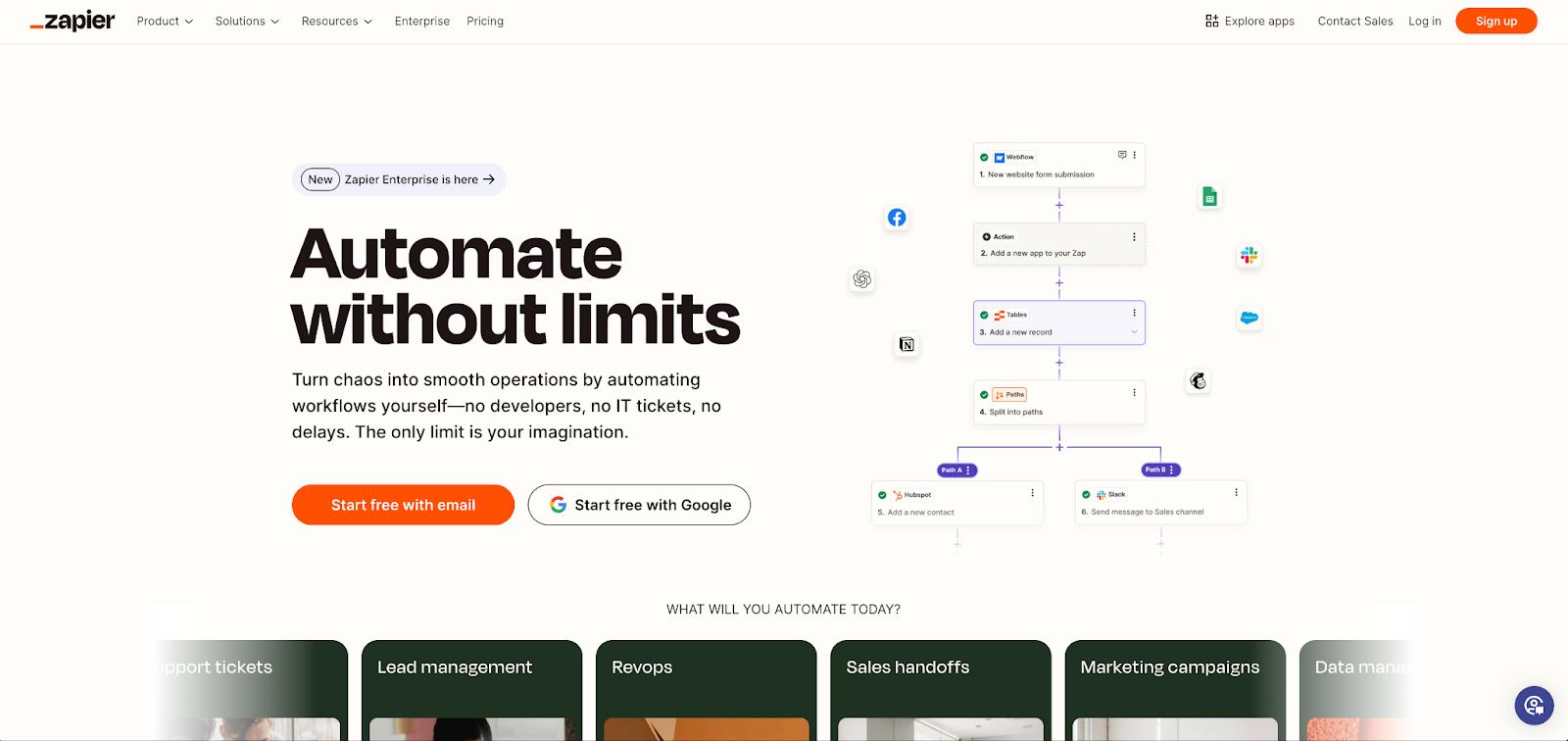
Zapier is most known for its vast library of pre-built integrations, connecting to over 7,000+ apps and automating powerful workflows between them.
Zapier focuses on simplicity and user-friendliness, ideal for beginners or those seeking straightforward solutions. Its interface and extensive 'Zaps' collection simplify automation setup, bypassing the need for detailed technical knowledge. Zapier aims to connect numerous apps effortlessly, catering to users prioritizing speed and ease.
Here's what the automation interface looks like in Zapier:

Now let’s take a closer look at some of the key features, tools, and capabilities that Zapier offers.
User-friendly interface
Zapier's interface is designed with simplicity in mind, making it intuitive for users of all skill levels. Its clean and straightforward layout allows you to quickly understand how to create automations, known as Zaps, without a steep learning curve. This approachability is especially appealing to those new to automation or those who prefer a more guided experience.
Extensive library of pre-made workflows
One of Zapier's most user-friendly features is its vast collection of pre-made Zaps. These templates provide users with ready-made automations that can be easily customized to fit their needs, significantly reducing the time and effort required to set up new workflows. This library not only accelerates the automation setup process but also serves as a learning tool, helping you understand how different apps can be connected and automated.
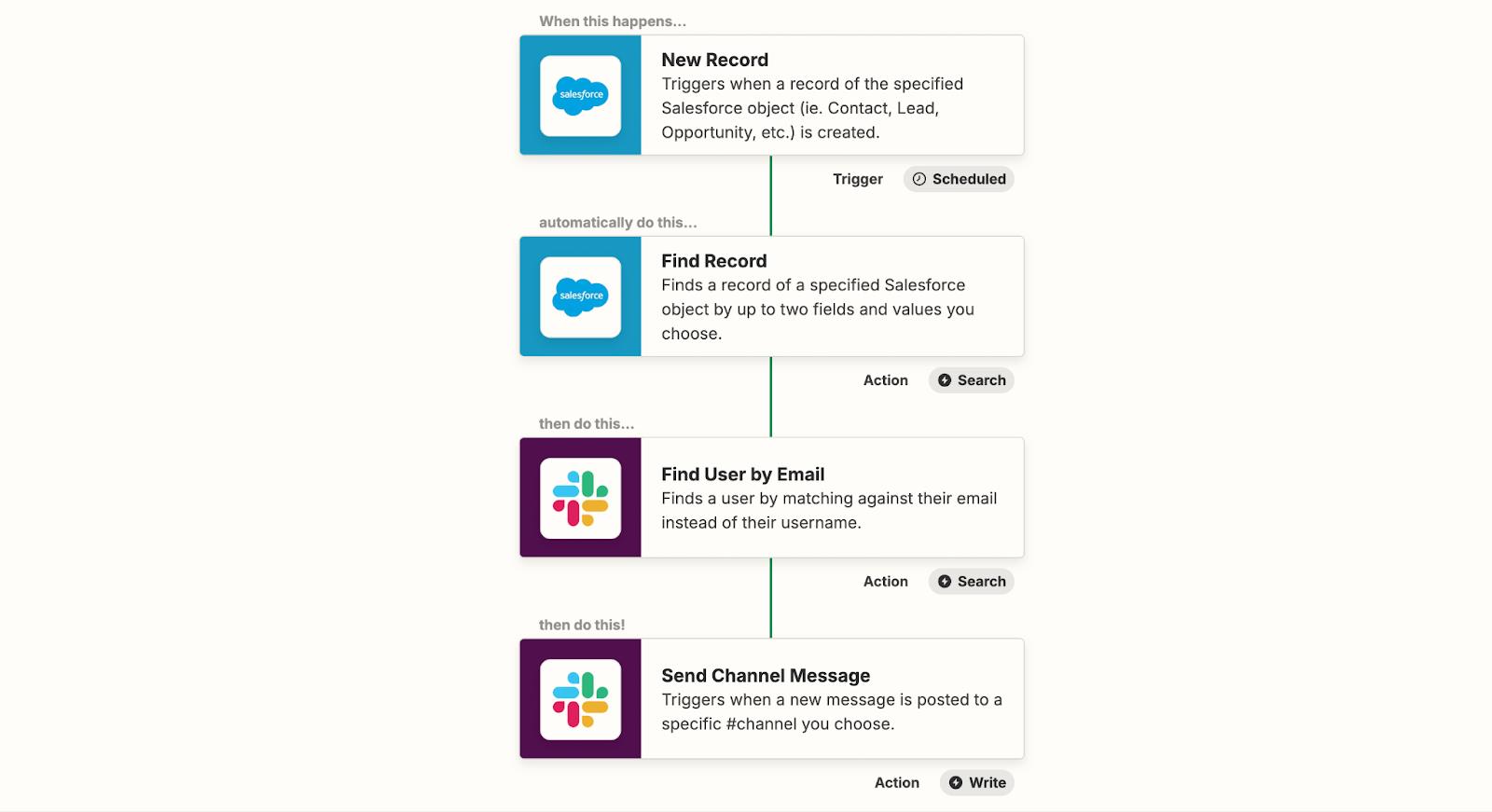
Simplified automation creation process
Creating Zaps in Zapier is simple: choose a trigger app, select the specific trigger event, pick an action app, and then specify the action to be performed. This linear, step-by-step approach demystifies the automation creation process, making it accessible even to those with little to no technical background (and it's made even easier with the AI copilot).
Internal app-building tools
Zapier has recently come out with a few internal app-building tools to add to its workflow automation offering, including Tables, Interfaces, and Chatbots. Zapier Tables allow you to store and manipulate data directly in Zapier, making it easy to track key information without needing a separate database. Interfaces provide a simple, customizable front-end for teams to interact with workflows and automate processes without diving into the back-end logic. The Chatbot feature allows you to build AI bots to enable a more interactive and conversational approach to task automation. If you’re looking for more than just workflow automation, Zapier has you covered here.
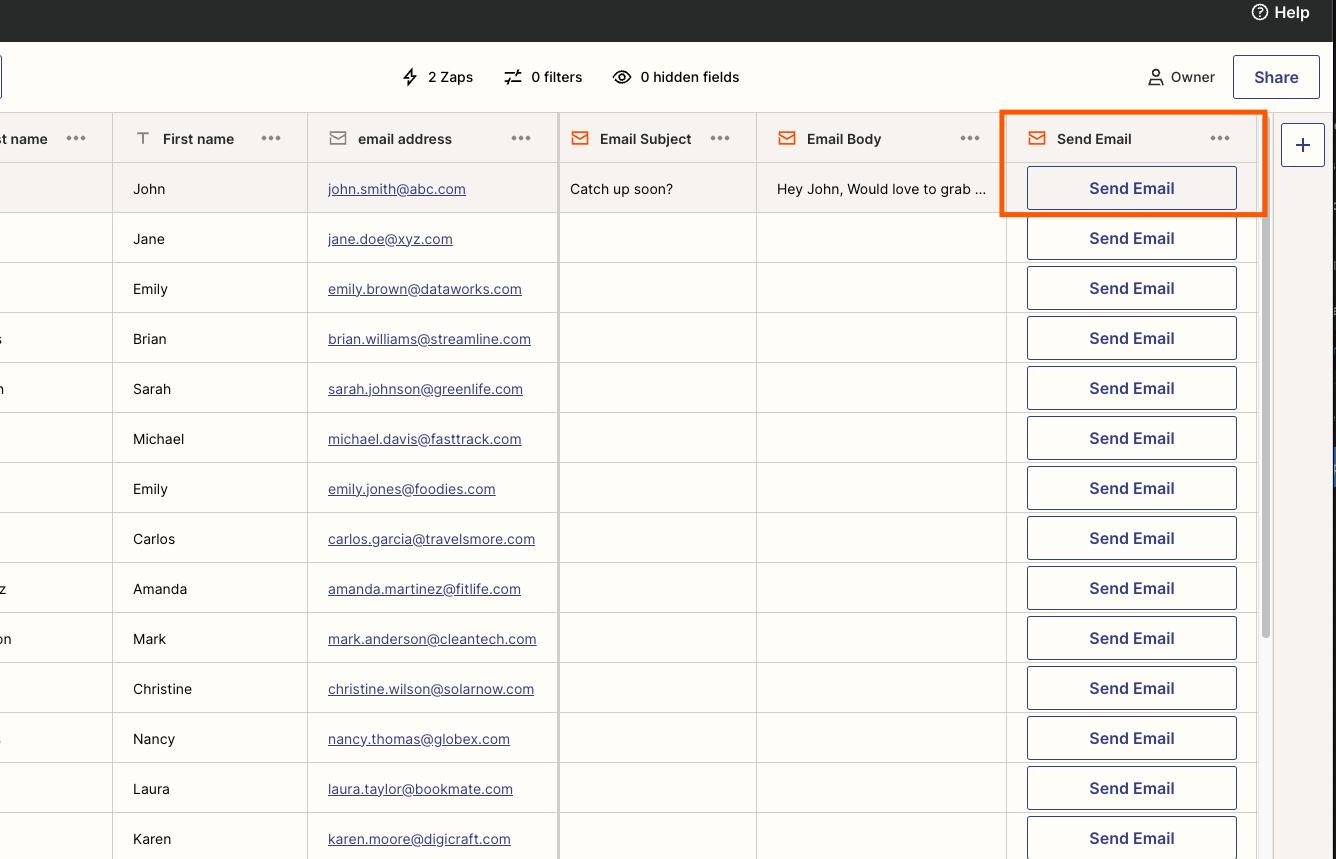
Breadth of integrations
Zapier is renowned for its expansive integration library, boasting connections with over 7,000 apps, making it one of the largest in the automation space. This vast array ensures users can find almost any app they need to integrate, from mainstream applications to niche tools, facilitating a broad range of automation possibilities.
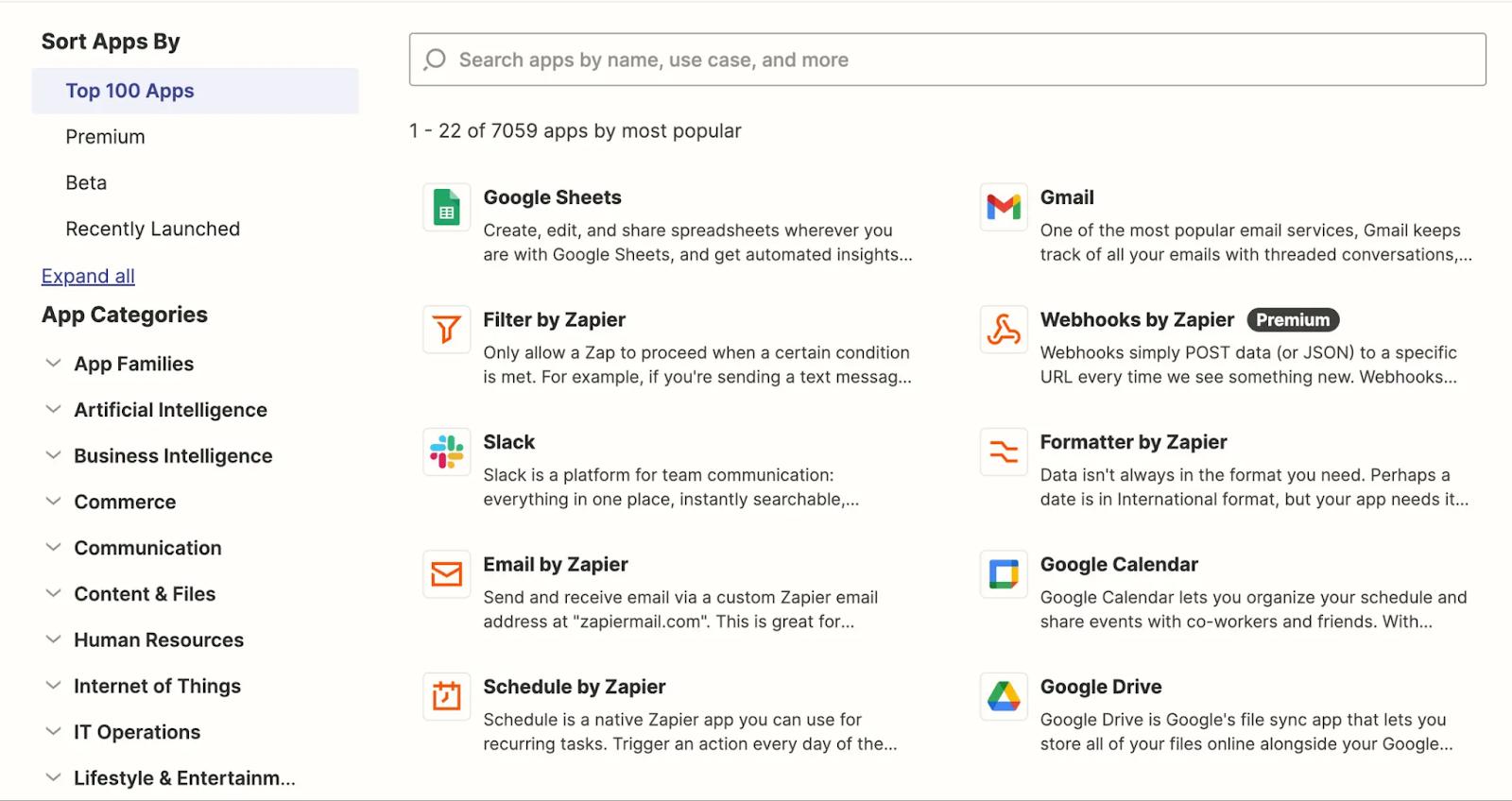
Direct comparison of Make and Zapier
Now that you have a solid understanding of the ins and outs of each of these tools, let’s compare them side-by-side:
- Ease of Use: From the onboarding experience to support resources to its intuitive interface, Zapier holds a significant advantage in terms of ease of use, especially for beginners or those looking for quick automation solutions. This accessibility is a key reason why many users gravitate towards Zapier when first diving into the world of automation.
- Complexity of Workflows: Make thrives with intricate workflows that require detailed control and conditional logic. Zapier, while powerful, is typically better suited for simpler, linear workflows.
- Visual Interface: Both tools have solid no-code interfaces. Make provides a visually rich UI that helps map out complex automations via their Router Tool. On the other hand, Zapier's clean, vertical-step design is user-friendly, but it may not display complex tasks, like branching or looping as clearly.
- Advanced Features: Make allows for more granular control of its workflow builder, like allowing you to set the exact number of times an action should be repeated. Zapier's strength lies much more in its simplicity and ease of use, with less emphasis on highly technical features. It recently added some internal app-building tools, like Tables, Interfaces, and Chatbots, which might be of interest to people looking for more than just a workflow automation solution.
- Pricing Plans: Make is more cost-effective for most use cases. It doesn’t restrict its advanced logic behind higher-tiered plans like Zapier, and for high volume, complex workflows, Make’s pricing is often more advantageous.
- Integrations: Both platforms boast a wide range of integrations, where Zapier has an edge on breadth (7,000+ apps), but Make has the advantage of integration depth—often supporting far more actions per app than Zapier.
As you can see, choosing between Zapier or Make really depends on the specific needs of your business and the capacity of your team. But as mentioned earlier, there is a third option, Relay.app, that might be a better solution for your business.
Relay.app — a better alternative
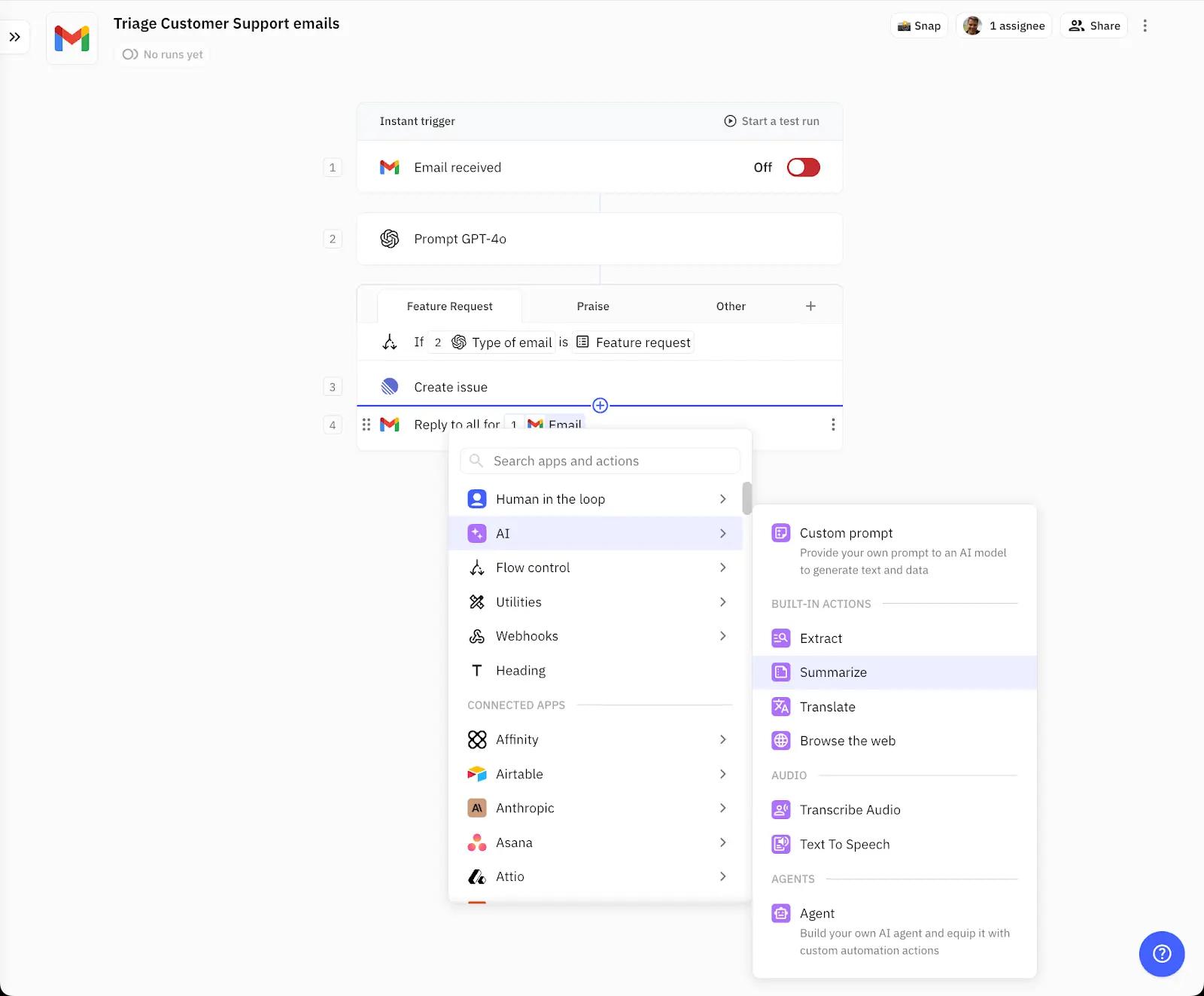
Here's why Relay.app may be the right choice for your workflow automation needs:
AI experience
Beyond nailing the automation basics, Relay.app has the most advanced and easiest-to-use AI integrations. All of the models you'd want to use (Open AI's GPTs, Claude, Gemini, Llama, etc) are built directly into the product in an easy-to-use set of AI steps. No need to set up other accounts or fiddle with API keys. It's all there and available for free.
Human-in-the-loop capabilities
Sometimes automation just doesn't cut it—say, your boss needs to sign off on a document before you can ship it, or you want to check an email before it gets sent to a lead. Setting up human touchpoints in Zapier and Make is technically possible, but not built-in (or easy to set up). Relay.app uniquely integrates human judgment directly into workflows.
This capability allows for human approvals, decisions, and data input, providing a level of flexibility and control unparalleled in the automation space. It's a feature that caters to businesses looking for a balance between automation and human insight.

Collaborative automation building
If you work in a team, Relay.app's collaborative automation-building feature can be particularly appealing. Building automations isn't a one-person job, after all. With Relay.app, your whole team can chip in to create and refine workflows. Team members can add comments, make edits, and contribute to the logic flow, which helps ensure the automations you build perfectly fit your team's requirements.
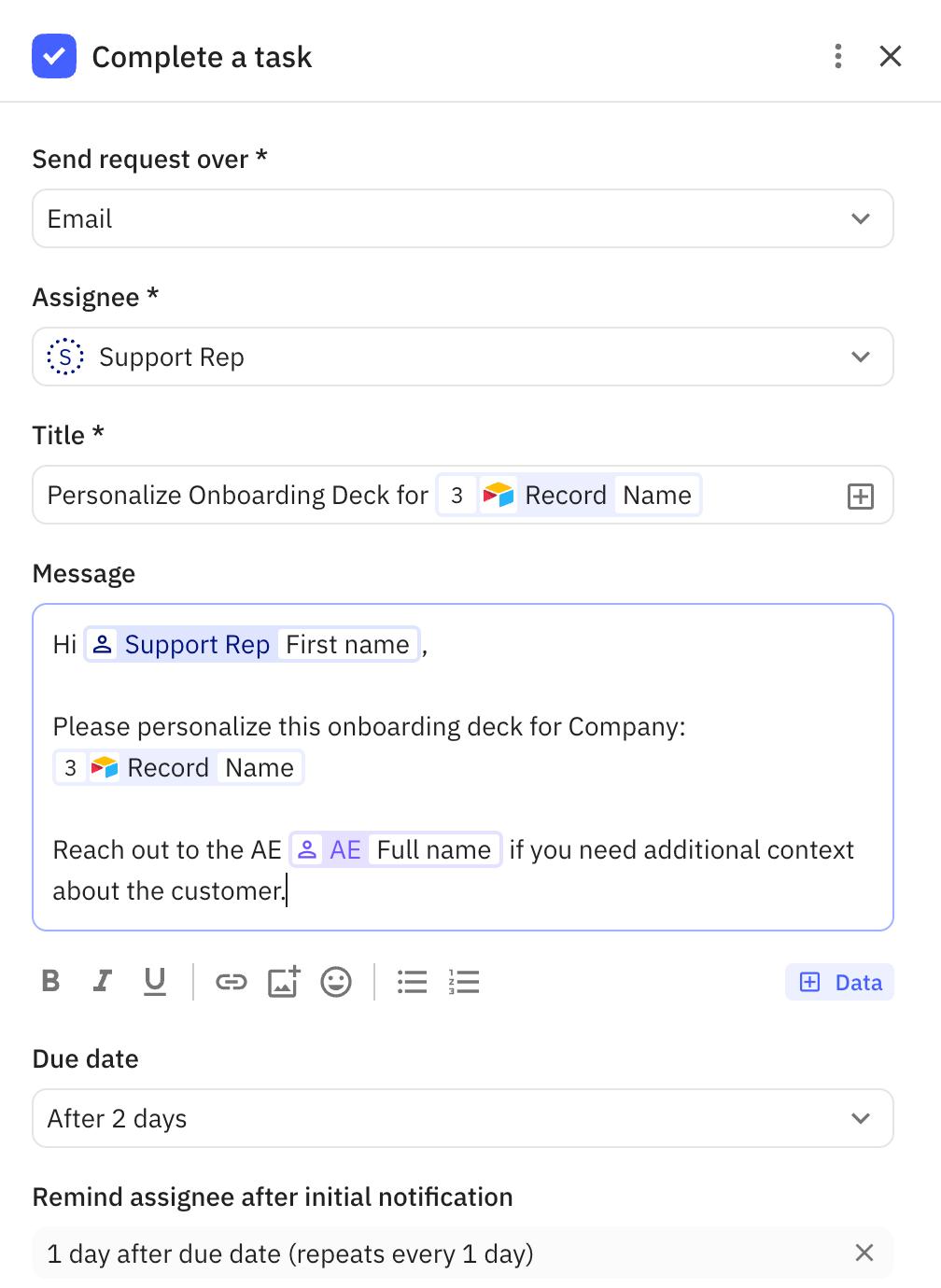
Simple and predictable pricing
When it comes to pricing, Relay.app offers a stark contrast to the tiered and sometimes unpredictable models of Make and Zapier. With straightforward, transparent pricing, Relay.app ensures businesses of all sizes can anticipate their costs, allowing for better budget management and scaling without surprises.
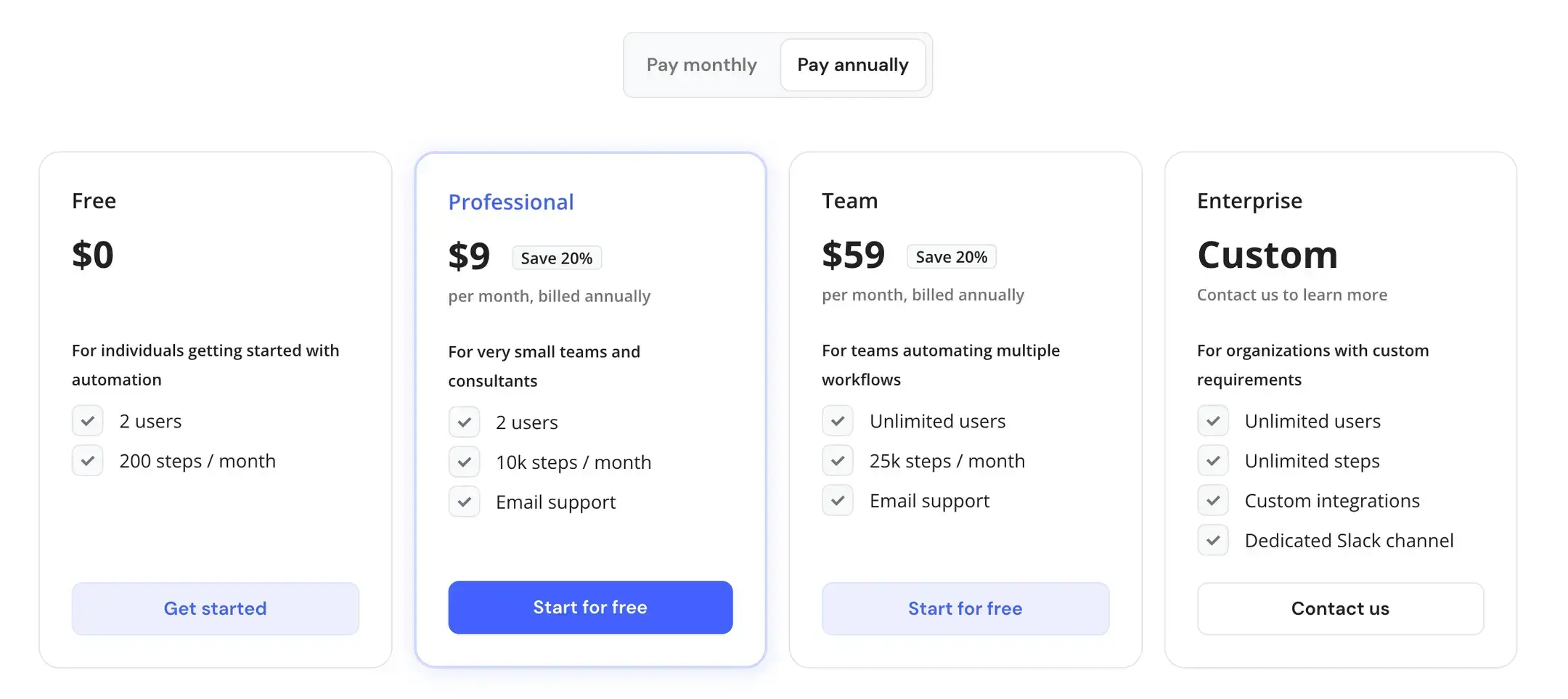
Explore Zapier Pricing or Make Pricing.
Your next steps
Now that you understand the ins and outs of Zapier and Make (and Relay.app), it’s time to pick a tool and start automating your workflows!
You can’t go wrong with any of these options, but if you’re ready to experience a more advanced, efficient, and human-centric approach to workflow automation, try Relay.app for free today, and discover how it can transform your processes, enhance teamwork, and lead your automation strategy into the future.
Related reading:

